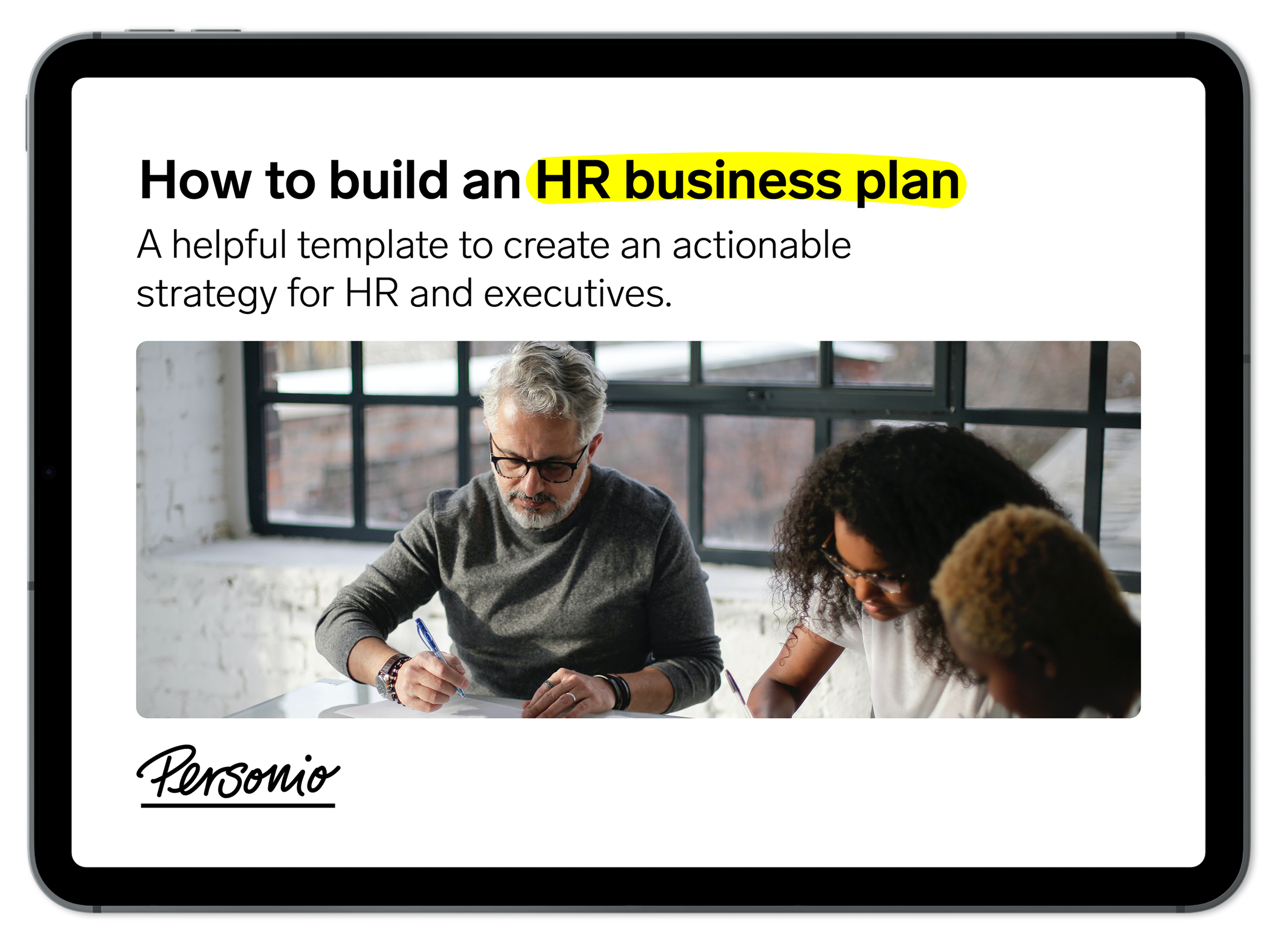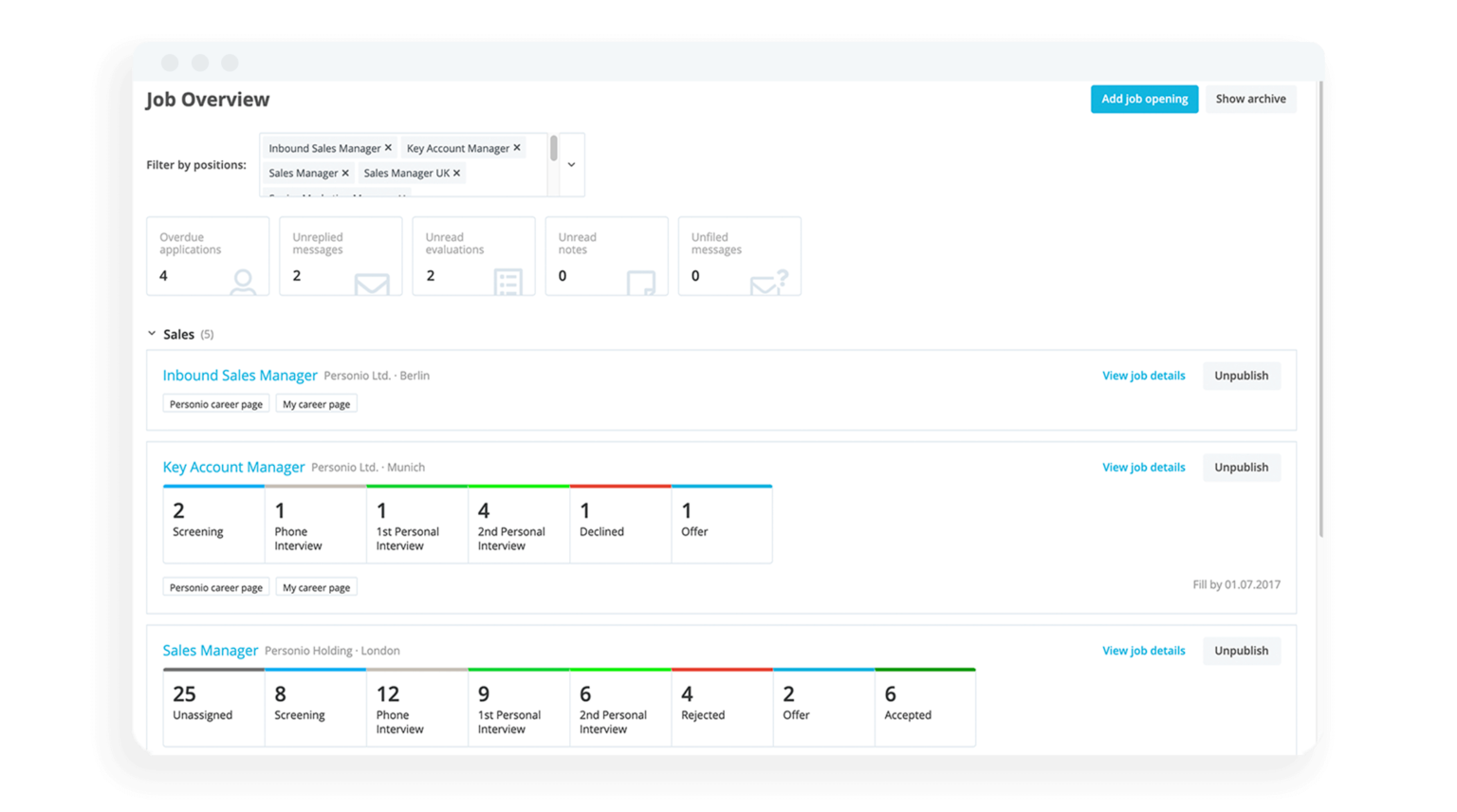
HR Business Plan Template
Unlock executive buy-in with our HR business plan template.
Get the templateThe succession planning process in 7 simple steps

Succession planning: it’s planning for the worst by expecting the best. That’s because this is your organisation’s opportunity to plan ahead of key departures while preparing current employees for future roles and developing them.
Whether you call it succession planning, anticipatory workforce planning or something else, succession planning can be a win-win for your people and your business. This article will help not only outline how to do it, but how to succeed at it, too.
Build your very own HR business plan with the help of our template. Download it now.Contents
- 1What is succession planning?
- 2What is the succession planning process?
- 3Succession planning: Frequently asked questions
- 4Is there a succession planning framework?
- 5The succession planning process in 7 steps
- 6The most common succession planning process mistakes
- 7What metrics determine succession planning success?
What is succession planning?
Succession planning is the process of replacing your organisation’s leaders and managers with high-potential, internal (sometimes external) replacements. Essentially, it is about identifying, developing and replacing employees to make a potential shift in responsibilities/hierarchy as smooth as possible.
What is the purpose of succession planning?
The purpose of succession planning is complex. It is not simply about damage control or replacing a key leader as quickly as possible. It’s about replacing a leader with someone prepared for the role, with the potential to succeed, who can shift into the position both quickly and successfully (with added emphasis on successfully).
Why should you build a ‘succession plan’?
Building a succession planning process or framework is about mitigating the risks of organisational change. This way, when a change at the very top occurs, the friction between departments, teams and employees is reduced or becomes nonexistent, because the ‘vacuum’ of institutional knowledge is removed.
What is the succession planning process?
Let’s consider the image above as a quick run-through of how the succession planning process works, these are the seven key steps in the succession planning process:
Start identifying key positions
Identify needs
Develop your job profiles
Start the recruiting process
Appoint a successor
Handover the job
Document the transition
Later on in this article, we break each of these seven steps down so that you can master succession planning with ease.
Succession planning: Frequently asked questions
Who should lead succession planning?
HR is primed to be a key leader when it comes to succession planning. That’s because both succession planning and workforce planning go hand in hand. As part of projecting the future of an organisation, HR teams need to have an incredibly clear vision of the key roles within an organisation, and what it would mean for those roles to become vacant.
Help your HRBP to unlock executive buy-in

Download our HR Business Plan Template to help your HRBP pull together a plan that earns executive support.
Get the templateHow does succession planning relate to L&D?
If we think of succession planning not only as replacing but of adequately preparing employees to take on new roles, HR has a role to play here in terms of career development, learning, and training.
What are the benefits of succession planning?
Because it keeps hiring costs down, improves your employer brand, and boosts retention rates at the same time. Succession planning matters because it helps to maintain a foundation of organisational stability, even in times of profound change. It ensures that even when key employees, their absence (at least professionally) is not felt.
Is succession planning becoming more popular?
The growing demand for succession planning strategies will grow as an entire generational workforce (primarily baby boomers) will retire. As a result, companies need to find qualified employees who can pick up these leadership roles and run with them. In sum, succession planning allows companies to preserve key qualifications while avoiding protracted and costly recruiting processes.
How often should organisations ‘succession plan’?
Succession planning should be a yearly topic for companies that are growing quickly. Or, it could be thought about in five-year increments for companies on a steadier trajectory of growth.
Is there a succession planning framework?
If you want to start a succession planning strategy, you need to have a plan in place. But, where do you start? Here are some of the general steps you’ll need to take:
Step | Described |
|---|---|
Identify | Identify key positions within your company. |
Assess | Assess the risk of those positions becoming vacant (account fluctuation rates, retirement dates, etc.) |
Source | Source talent that is currently within your company. |
Manage | Manage that talent by developing existing personnel. |
Build up | Concurrently, build up a strong talent pool. |
Keep in mind, though, that succession planning is not only relevant for large or medium-sized companies. Even small, family-run businesses should have a plan in place when it comes to successful succession.
Looking to build up talent pools in your org? Read our full guide to it today.
What is the first step in succession planning?
The first step in succession planning is identifying key positions. After all, succession planning is based on departure, so you need to consider which roles are at risk.
Key positions come in all shapes and sizes. It helps to have a strong handle on where the highest amounts of ‘institutional knowledge’ exist within your organisation. Once you know that, you can prepare for departures accordingly.
The nine-box grid can serve as the first step for your succession plan. Read about it right here.
The succession planning process in 7 steps
Now that you know a bit more about succession planning as an HR strategy, and why it matters, how can you do it? Here are seven well-coordinated steps to ensure key positions are filled successfully…
1) Start by identifying key positions
This is going to require some internal reflection. Begin the succession planning process by identifying qualifications that are essential to your company’s success. This could include years of experience, qualifications or licenses, or other ‘soft skills’ that have an impact on company success (like customer relations abilities, for example).
Then, you need to write them down. So, take these qualifications essential to your company’s success and document them in what we might call ‘initial job profiles.’ Now you have an idea of what you need, relatively speaking, but we need to dig a bit deeper to get to the core of the issue…
2) Then identify your exact needs
If we start by knowing the key qualifications that influence success, now we need to plan for where we might lose those skills. So, you need to establish which key positions might become vacant in the near future. Ask yourself:
Which employees are about to retire?
Are any employees currently pregnant?
What is your overall attrition rate?
You can also take a top-down approach in this step, and plan for your entire company’s succession plan starting from your CEO to executive leadership and further down the organisational chart. That said, if you are in a pinch and want to get started immediately, you should start filling gaps that may reveal themselves sooner than later.
In this step, it is also important to include the financial resources you may need for the recruiting process. It is important to note how the recruiting process transfers into time (and money) spent. It’s also at this point that proper recruitment software can help maintain efficiency without draining resources.
Create a great candidate experience

Organise applications, plan interviews and quickly evaluate candidates. Manage your entire hiring process with one tool with Personio.
Unlock Smoother Hiring3) Develop your job profiles
A key part of the succession planning framework is having fleshed-out job profiles in place. What constitutes an effective job profile, though, and where should you focus your efforts? Here’s a quick rundown:
Component | Defined |
|---|---|
Tasks | The tasks a key position currently performs. |
Qualifications | Qualifications a person in that position has to their name. |
Evolutions | Potential evolutions of this role as times change. |
Additions | Any additional skills this position may want to have in the future. |
Think of this as your template for finding the ideal person to fill this role in the future. Essentially, it is taking the current person who occupies this role and turning their skills into something of a blank canvas. This transforms skills thought to be irreplaceable into an actionable plan for recruiting.
4) Start the recruiting process
Concrete examples of succession planning typically begin during the recruiting process. This is where the process takes shape, and it helps if you approach it from several key angles, including:
Building up your talent pool.
Implementing an employee referral program.
Providing targeted upskilling training for current employees.
If you are taking a proactive approach, maybe you have all the time in the world for succession planning. But, if you’re low on time, you may want to set deadlines for finding a suitable candidate or completing the handover period.
5) Appoint a ‘successor’
Whether internally or externally, this is the part of succession planning that signals the end. While a lot of the heavy lifting may have been done during the job profile stage, now you have someone in mind who could be able to take on this role.
Apart from interviews, though, finding the right candidate during the succession planning process should rely on more nuanced measures. You should work with assessment centers, case studies, or work trials, to determine the best fit.
That said, a technical fit is not always a cultural fit. For succession planning to be successful, it often comes down to how someone fits within a company’s distinct culture.
How do you begin to evaluate this? First, you likely need to have a hold on your own culture and what it means to work with your company, but you may want to consider the following to evaluate a candidate’s fit:
An interview with potential peers to see if they mesh well.
A case study directly related to their soft skills (perhaps giving or receiving feedback).
Scheduling a more casual interview setting (like lunch) for a candidate to show more of their personality.
This is the part of succession planning that you need to get right. After all, you now have someone that you have deemed the right fit for the role. So, they need to be the right fit from multiple angles, and not based on whether they can do the job or not.
6) Hand over the job
When done right, succession planning also loops in the person leaving the role. This is most felt during the handover process, where a new employee gradually learns their new tasks, both from their future coworkers and team leads, as well as from their predecessor (who will share existing knowledge or institution knowledge they only have).
Keep in mind, though, that the handover period shouldn’t be too short. Especially if a key position is being filled, it is important to bake in more time (think in terms of months and not weeks) for an employee to manage complex tasks that used to go smoothly. They will get there, but they require patience.
However, if a handover period is too long, there is a risk that the successor won’t be able to come into the role in their own right. They will be too influenced by how the role used to perform, and you may lose out on the future-oriented skills that you feel this role needs to thrive.
The best answer is somewhere in the middle. While team leads should have a long-term perspective, there should be an active, fast-paced, and collaborative approach to handing over knowledge. Ideally, this would also be done through confluence pages or a company wiki, where institutional knowledge is public and not private.
7) Document the transition
Now that the handover of the job has been completed, what comes next? Documenting the transition is a crucial step, in order to note how the position was filled and to inform future processes. Keep in mind the following:
The demands of this position in particular.
Processes that went smoothly during the handover.
Issues during the handover that caused confusion.
Gaps that still potentially exist.
In the future, this will help optimise your recruiting process, as well as succession planning strategies for similar roles that may become available.
How do you identify important positions for succession planning?
Keep some of these succession planning best practices in mind:
Best practice | Why it matters |
|---|---|
Go beyond leadership | Don't just think about managers and leaders. Sure, your CEO departing would mark a huge shift for your company, but so might a product expert who has been with the company since day one, or a salesperson who has brought in a lot of business over the years. It's not just about going from the top down! |
Research market trends | How in demand are certain positions across your workforce? Your competitors may be trying to lure away some of your more 'valuable' talents, so keep an eye on which positions are currently popular, harder to recruit for, and keep them in mind. |
Consider company history | Who has been around the longest, who was present for key events in the lifespan of the company, who has special relationships that can't be replicated easily. These are roles that may be hard to spot at first, but they could be painful departures should they leave. |
Decide on internal or external | In some instances of succession planning, filling a position with internal talent may simply not be possible. In cases like these, with very clear skill gaps that can't be replicated across your workforce, these are roles that should immediately be noted and kept apart from the rest. |
In the end, it is key to think about it like this: Seniority is not the only qualifier for succession planning in a company. You also need to keep in mind skillsets, relationships, how long someone has been at a company, and if they were at the company during a key stage of growth or during challenging times.
For example, an IT specialist may hold a key position within your company if they are competent in a programming language that is important for your business. While they may not even be senior, they may have invaluable skills that would make their departure a key loss for the company.
When should a key position be filled externally?
For succession planning to be successful, you need to think about whether your company currently has the talent to replace a key position. This means that, even if it is cheaper to fill a position internally, it does not guarantee that a current employee is up to the task.
In fact, an employee may not be qualified for the role, but they also may not be interested. Here is what you should consider for either internal or external fillings:
Advantages | Disadvantages |
|---|---|
None or a short recruiting process, as the employee's skills and qualifications are already known. | Newcomers bring in fresh ideas, drive innovation, and help counteract blindness to the company's failings. |
The employee can be provided with specific training to develop key skills before they take on the new role. | External candidates provide access to new networks. |
Short induction phase: The employee is already familiar with the company and its processes. | Newcomers are objective and disinterested in previous conflicts within the company. |
Investing in staff development fosters employee loyalty. | External candidates may enjoy greater acceptance, above all in leadership positions. |
Developing internal staff has a positive effect on the motivation and loyalty of other team members. | New employees contribute additional skills and knowledge. |
The most common succession planning process mistakes
Effective succession planning is crucial when it comes to one key filling: your CEO. In most cases, CEOs don’t retire every day. However, one in every ten successions is unexpected.
For this kind of succession planning to work, you will need to have a set of specific steps prepared. More importantly, please make sure you don’t fall into either of the following two common traps:
1) Underestimating the time you will need
Start the succession planning process early. Ideally, you would do so five years ahead of time. This would then entail developing steps and processes to find the ideal succession candidate to manage the transition effectively.
After all, this is about far more than simply finding the right fit. You need to find the right candidate, develop them, and prepare them for the role, and this can take a great deal of time and effort.
2) Not having a contingency plan
If a key person leaves a company unexpectedly at short notice, their position may remain vacant for some time. That is if you have not actively planned for their succession well ahead of time.
But, certain positions need to be filled quickly to make sure the company stays on track. In exceptional situations, you shouldn’t wait until you’ve found the right candidate – work with interim management instead.
In these cases, HR consultants will usually provide an experienced manager for a temporary deployment at short notice until a permanent successor has been found.
What metrics determine succession planning success?
Now that you have a succession plan in place, how do you determine if it is working or not? These key metrics and KPIs can give you a relatively accurate read of whether or not your plan is working correctly:
Succession planning metric | Why monitor it |
|---|---|
Turnover rates | If people are leaving more because they are in the wrong position. |
Retention rates | Not only if people are leaving, but if your key, essential talent is sticking around. |
Cost-per-hire | If your hiring costs for key positions is going down or up (this can be influenced by your talent pool) |
Time-per-hire | Effective succession planning should cut down your hiring time. |
Planned positions being filled (%) | Whether your succession planning candidates were deemed ready for the role. |
Meet Personio
WATCH: Get to know Personio in three minutes

We need your consent to load this service!
This content is not permitted to load due to trackers that are not disclosed to the visitor.
Personio is an all-in-one HR software designed for every stage of the employee life cycle.
Using Personio, you can manage all your most important HR processes from one place. Recruit, manage, develop and pay your employees from one centralised HRIS.
For HR professionals, you can unlock new levels of productivity and influence. Become the HR business partner that your business needs, by getting back time for what matters: your people.
For line managers, Personio seamlessly builds automated performance cycles, tracks vacation days and keeps employee information up-to-date (and in a compliant fashion).
For employees, no more fussing with cumbersome tools and processes. Employees can request days off, change their information and keep track of goals and more. All from one place.
Speak with an expert today about your HR needs and how Personio can meet them. Or, give Personio a spin for yourself by starting your very own free trial right now. It’s all yours for 14 days.

